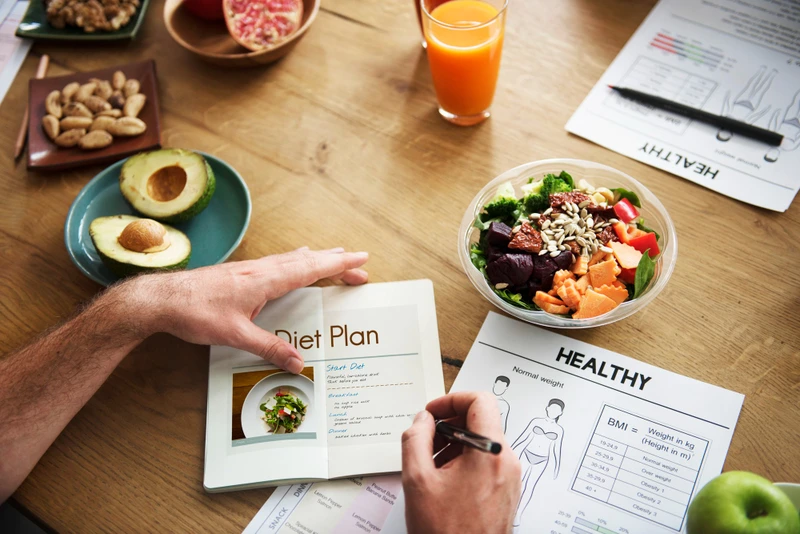- Published on: Jan 27, 2025
- 2 minute read
- By: SecondMedic Expert
Healthy & Happy Travels: Your Ultimate Guide To Eating Right In India!
Traveling across India is a feast for the senses, but it can be tricky to balance tasty local flavors with healthy eating habits. Whether you’re exploring bustling cities, scenic mountains, or coastal beaches, making smart food choices will keep you energetic and feeling great. Here’s how you can enjoy healthy, fresh, and local meals without carrying pre-packed snacks!
Pick Local, Fresh & Seasonal Foods
India’s diverse geography offers a wide variety of fresh, seasonal fruits and vegetables. Wherever you go, opt for:
· Fresh fruits from local vendors – bananas, papayas, apples, guavas, and pomegranates.
· Coconut water in coastal areas – a natural electrolyte booster.
· Sugarcane juice or fresh lime soda – a refreshing alternative to packaged drinks.
· Local green veggies – go for saag (mustard greens) in North India, avial (vegetable stew) in South India, and fresh salads in organic cafés.
Choose Healthy & Hygienic Street Foods
Street food is an integral part of Indian travel, but not all of it is unhealthy! To eat well while enjoying local flavors:
· Prefer steamed or roasted options over fried ones – go for steamed momos instead of deep-fried samosas.
· Try chaat with boiled ingredients like chana chaat, sprouts bhel, or corn chaat instead of deep-fried puris.
· Opt for tandoori items like tandoori roti, grilled paneer, or chicken over oil-heavy curries.
· Pick stalls that prepare food fresh in front of you and avoid pre-cooked items sitting for long hours.
Order Smart at Restaurants
Dining out while traveling doesn’t mean you have to compromise on health. Here’s how you can make better choices:
· Ask for less oil, butter, or ghee in your dishes.
· Choose roti or phulka instead of naan or parathas.
· Prefer dal, grilled paneer, or stir-fried veggies over creamy curries.
· Order curd or buttermilk instead of sugary desserts.
· Go for freshly squeezed juices instead of aerated drinks.
Opt for Wholesome Breakfasts to Start the Day Right
Breakfast is the most important meal while traveling. Instead of sugary or deep-fried foods, choose:
· South Indian: Idli with sambar, dosa with minimal oil, upma, or poha.
· North Indian: Plain paratha with curd, dal cheela, or sprouts salad.
· Western options: Scrambled eggs, multigrain toast, or fresh fruit bowls.
This keeps you full longer and provides the energy needed for travel activities.
Smart Choices at Train & Airport Stops
Whether you’re on a long train journey or catching a flight, you can still eat well with these choices:
· At railway stations: Choose fruit vendors, plain idli/dosa stalls, or fresh sandwiches over fried snacks.
· At airports: Opt for salads, yogurt, or fresh juices from cafés instead of processed foods.
· On trains: Order IRCTC e-catering meals that offer healthier alternatives like dal-rice, chapati-sabzi, or grilled options.
Stay Hydrated & Avoid Sugary Drinks
Travel can lead to dehydration, which often makes you feel hungry when you’re actually just thirsty. Keep yourself hydrated by:
· Drinking filtered or bottled water instead of aerated drinks.
· Choosing buttermilk, lassi, green tea, or herbal tea over high-sugar milkshakes or energy drinks.
· Avoiding excessive chai or coffee with added sugar – opt for black tea or lemon tea instead.
Practice Mindful Eating & Portion Control
Traveling often leads to overeating, especially when trying new cuisines. Here’s how to stay balanced:
· Eat smaller:more frequent meals instead of one heavy meal.
· Stop eating when full : avoid stuffing yourself just because the food is delicious!
· Share portions: when trying multiple dishes to avoid overconsumption.
· Listen to your body: if a dish feels too oily or heavy, balance it with something light later.
Final Thoughts
Traveling in India doesn’t mean you have to sacrifice health for taste. By making small, smart choices, choosing fresh, local food, and maintaining hydration and balance, you can enjoy your journey without feeling sluggish or unhealthy.
Next time you hit the road, try these healthy travel hacks and enjoy India’s rich flavors the right way!
Read FAQs
A. Some healthy street food options include steamed momos, chana chaat, sprouts bhel, and grilled tandoori items like paneer or chicken.
A. Choose fresh, seasonal fruits and vegetables, opt for lighter street food options, stay hydrated with coconut water, and practice portion control.
A. Healthy Indian breakfast options include idli with sambar, poha, dal cheela, plain paratha with curd, or fresh fruit bowls for energy-packed mornings.









